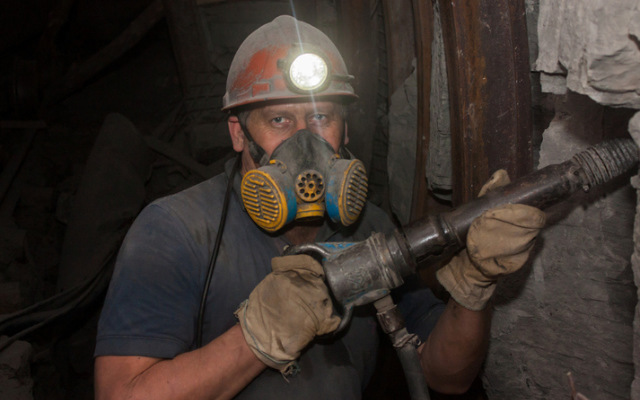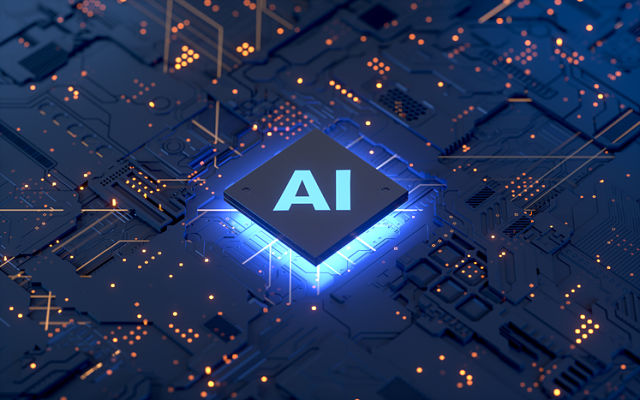Australia’s mining industry on cusp of electrification, blockchain and AI

BDO predicts most new underground mines will be electric in the coming decade.
As the electrification of transport takes hold across the world, a new sector is also undergoing immense change – Australia’s mining industry, with most new underground operations predicted to be electric by 2023.
BDO head of global natural resources Sherif Andrawes told Small Caps he expects Australia’s mining sector will look a lot different in the next five to 10 years as new technologies such as artificial intelligence and blockchain become commonplace, along with electric mines and alternative funding sources for junior explorers.
Currently, Australian mines rely heavily on diesel-powered vehicles and heavy machinery, but Mr Andrawes claims safer working conditions and increased investment will be the push the sector needs to shift towards electrification.
“I see diesel particulates in the future being like asbestos and a real issue for underground mining companies and contractors.”

Diesel particulates negatively impact the health of underground miners.
“We now understand a lot more about the health and safety dangers for people exposed to nano diesel particles and electric mines will go a long way in reducing those risks for staff working underground,” Mr Andrawes explained.
“That is one impetus and the other is reduced operating and maintenance costs.”
Mr Andrawes pointed out electrified machines have fewer moving parts and will subsequently require less maintenance and downtime.
As a result, this will push operating costs down.
Barriers to electrification
One barrier companies’ face in developing an electric mine is the capital cost of the equipment. But Mr Andrawes noted these costs are coming down.
However, he did say existing mines will struggle to completely transition.
“I don’t think there are that many underground mines with a very long life that it will be worthwhile to change big capital items.”
He said with existing mines we’ll probably see some transition to electrification, but it would be on the periphery and more likely light electric vehicles.
New mines more likely to be electric
New underground mines will be a different story.
“They’ll be designed with electric in mind. There’ll be some things where the technology may not be quite there, but I think 10-15 years from now everything will be electric.”
Additionally, Mr Andrawes pointed out that a driving force behind electric mines will be the financiers themselves.
“The big superannuation funds and the like are very keen on social responsibility and reducing carbon emissions. It is a big issue for them.”
He added that investors’ preference for sustainable operations will help companies raise the required capital.
“This is a shift we’re already seeing in the Australian market – if projects aren’t green, the investment won’t come.”
He noted that companies will face a cost not to transition.
Although there aren’t any completely electric mines in Australia yet, Mr Andrawes said he’d seen some underground mines in Canada become electric.
He added the feedback from these operations has been positive.
Back in Australia, Mr Andrawes said many companies will be watching the resources space to see the successes and hurdles faced when the first company decides to implement the country’s maiden fully electric underground mine.
Shift towards blockchain and AI technologies
In addition to electrification, Mr Andrawes claims artificial intelligence and blockchain technologies will grow in the resources space.
With increasing demand for supply chain transparency, social responsibility and green technologies, Mr Andrawes said blockchain technology would prove popular in the mining sector.
“Like many industries in today’s climate, people demand proof that the products they’re buying, and the people they’re buying them from, are socially and environmentally responsible.”
He pointed to the cobalt sector where end-users are pressured to ensure the mineral is sourced from ethical operations, with more than 60% of the world’s cobalt arising out of the Democratic Republic of Congo, which is shrouded in human rights abuse allegations.
Blockchain would enable the product’s source to be verified and its movement tracked along the supply chain.
Mr Andrawes added blockchain technology would also simplify the procurement process.

Use of artificial intelligence in mining and exploration is expected to grow.
Meanwhile, use of artificial intelligence to interpret data, boost operational safety and productivity is expected to also become more popular in the mining space.
Mr Andrawes said AI is currently used in Canada to assist with geological exploration.
“They are using AI techniques to shortcut the exploration process,” he explained.
Mr Andrawes anticipates as the technology becomes more accessible, it’s uptake will rise and the number of applications it has will expand.
Rare earths critical to technology future
Shoring up the world’s electrification are rare earth elements, which are critical to most modern technologies.
“Rare earths in small quantities are vital to so many things from solar panels through to mobile phones and everything in-between,” Mr Andrawes said.
However, China owns and controls the vast majority of these minerals.
With the ongoing trade war between the US and China, Mr Andrawes explained there is a mounting need for security of rare earth supplies.
“Australia is a great source of those rare earths and Australian companies have the opportunity to actually be a secure source of supply for the rest of the world outside of China,” Mr Andrawes explained.
“One thing we think we’ll see is some of the tech companies trying to secure supply directly and potentially going a step further and investing directly in mines themselves just to get that security of supply.”
“It wouldn’t surprise me if five or 10 years from now you see Apple or Tesla having a direct interest in a project,” he added.
Funding alternatives
Another shift in the mining sector Mr Andrawes predicts is a move to crowdsourced equity funding for junior explorers.
He said Australia has been slower to take this funding up than expected due to lack of platforms and regulatory and technology hurdles.

Crowdfunding is predicted to become a popular funding alternative for junior explorers that want to raise smaller amounts of equity.
“Another challenge in Australia has been finding companies willing to be the first-movers in this direction,” Mr Andrawes said.
Despite the sluggish uptake in this financing solution, Mr Andrawes said it is “perfect” for junior exploration companies.
“A lot of these companies rely on equity and going to somewhere like the ASX, they are subject to all the requirements and listing rules which can be quite high cost and onerous.”
“Whereas, a crowdsourced equity model allows you access small amounts like $500,000-to-$1 million at very low cost and much less requirements than the ASX.”
“Early stage exploration companies can raise money in this way and then go to the ASX at a later stage when they are larger and can better-cope with ASX requirements.”
Mr Andrawes said other financing solutions for companies include royalty and metal stream agreements.
He said he expects these agreements will rise in popularity with mid-size companies – with the US and Canada leading the way the last few years.
“Alternative finance will have the potential for drawing investment funds away from the stock market, particularly as investors look for new opportunities in a low-interest rate world.”
“BDO predicts this trend will only grow,” Mr Andrawes said.
